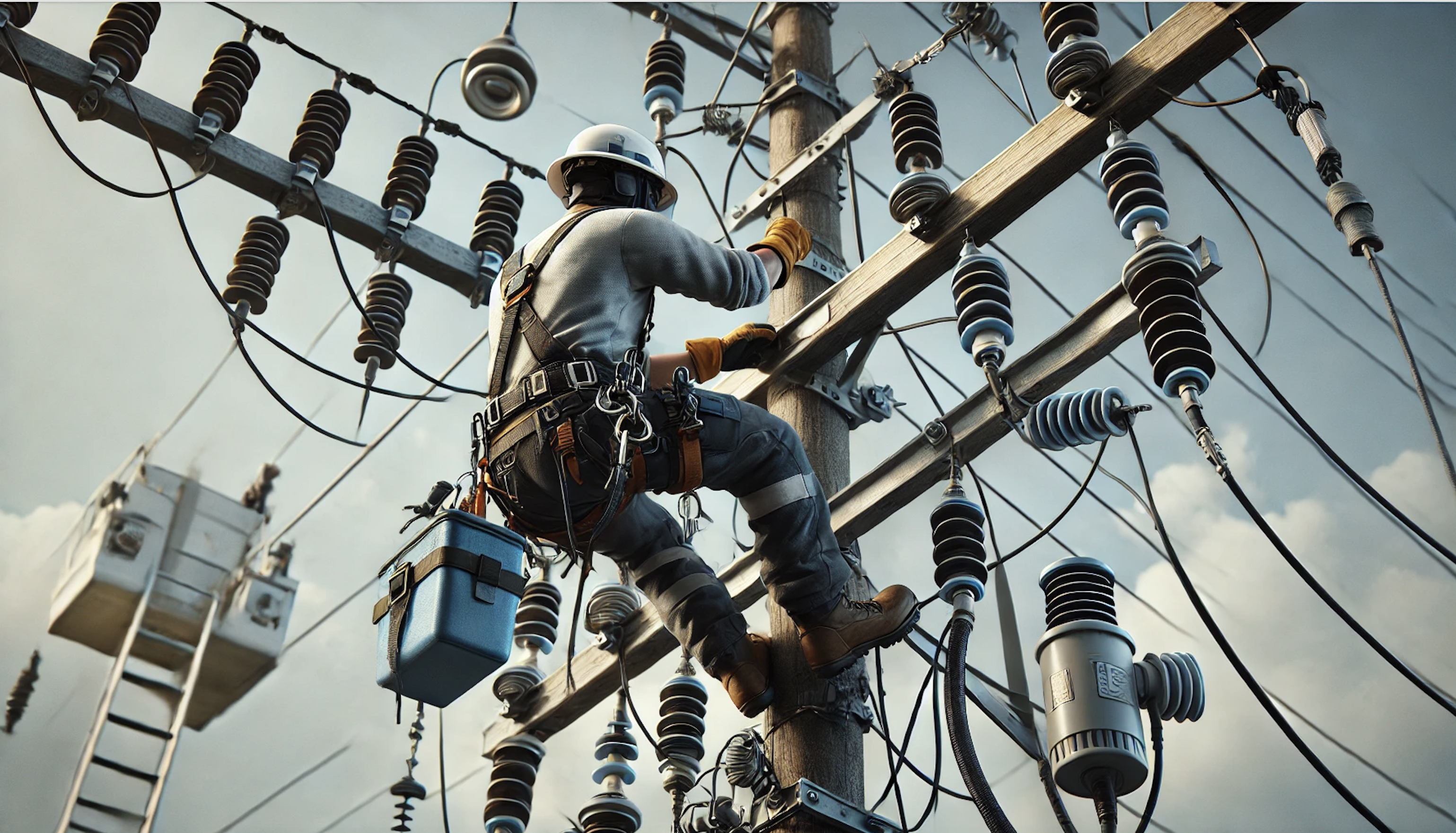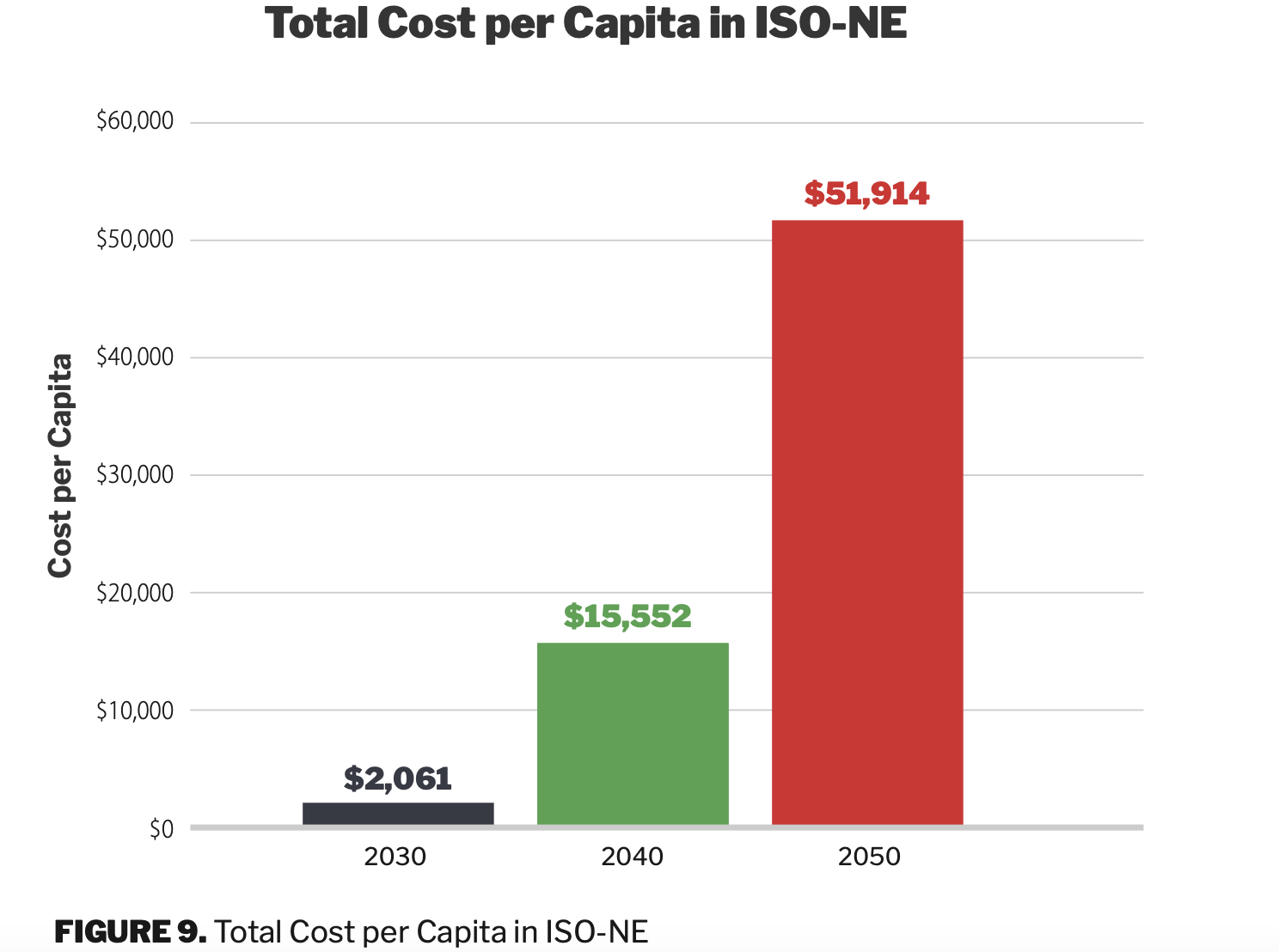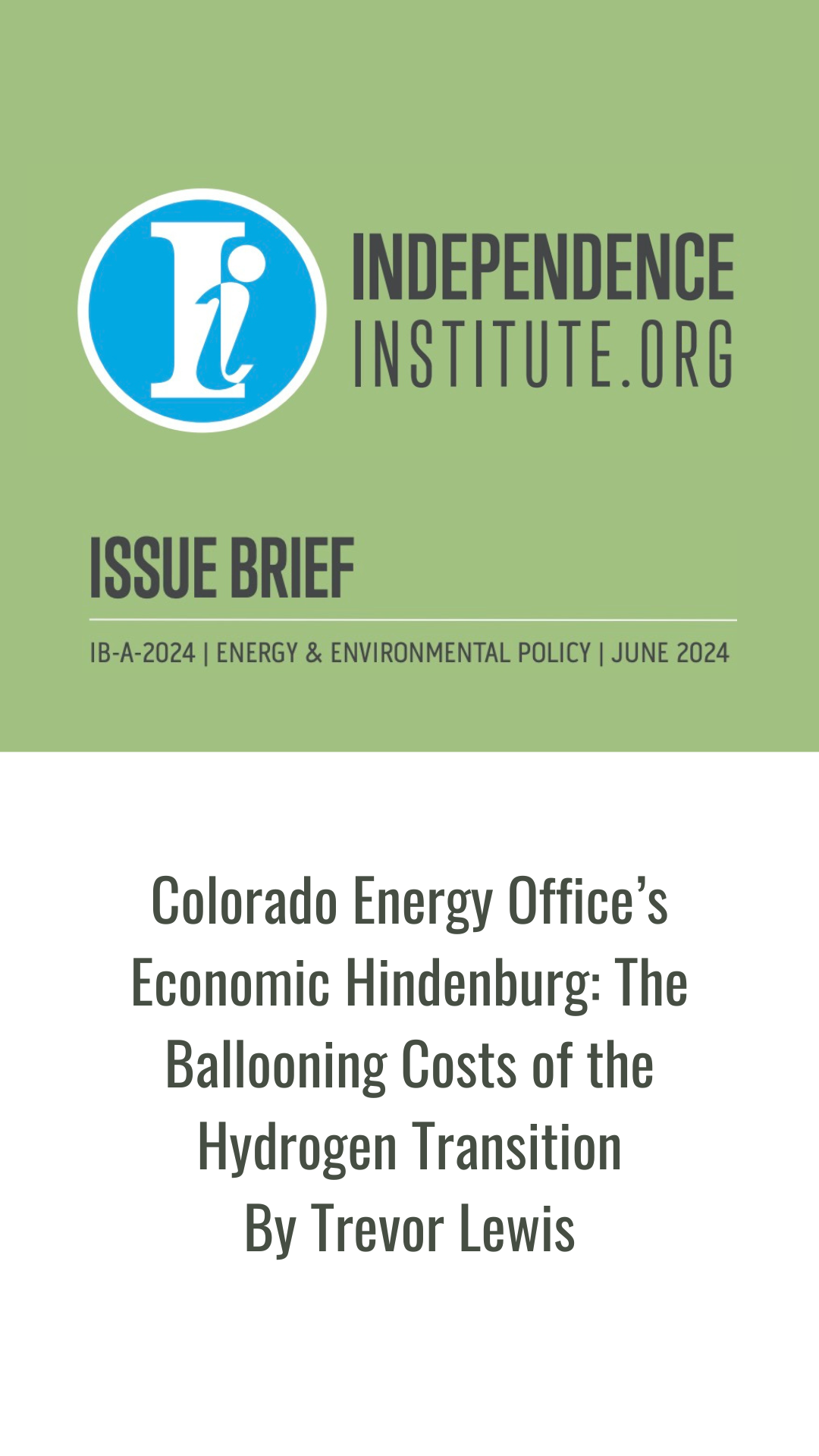Our Work

Study Finds APS’s Voluntary Net Zero Will Be Costly for Consumers
In our most recent research study, The High Cost of the APS Plan to Go Net Zero, AOER evaluated Arizona Public Service’s (APS) plan to achieve “Net Zero” emissions by 2050. The study, commissioned by Arizona Free Enterprise Club and the AZ Liberty Network, projects that APS’s Net Zero plan would necessitate an investment of at least $42.7 billion by 2038, potentially increasing residential electricity bills by approximately $100 monthly and commercial bills by about $454 per month.
The plan involves significantly expanding grid capacity from the current 10 GW to 27 GW to accommodate intermittent renewable sources like wind and solar. Despite this expansion, the analysis indicates a possible capacity shortfall of up to 3,701 MW by 2038, which could affect about one-third of customer demand and lead to rolling blackouts. An alternative scenario focusing on reliable, dispatchable power sources could save ratepayers over $20 billion. The study reveals that APS’s current approach is being done voluntarily without direction from the state legislature or the Arizona Corporation Commission.

The Staggering Cost of New England’s Green Policies
Staggering. Mind boggling. Shocking. Inconceivable. All words no one wants associated with their future energy costs. Yet, that’s what we found when we modeled the cost and reliability impact of the six New England states’ energy policies on the group’s residents within ISO-NE (New England’s regional electricity transmission organization that schedules electrity supply to meet demand).
Key findings of the report The Staggering Cost of New England’s Green Policies:
- An estimated $815 billion additional cost to New England ratepayers by 2050, excluding federal subsidies.
- A required buildout of 225 GW of renewable energy capacity, including offshore and onshore wind, solar, and battery storage.
- Significant risks of prolonged blackouts due to the inherent intermittency of renewable energy sources.
- Doubling of electricity rates, with residential, commercial, and industrial customers facing substantial cost increases.
- Environmental, Social, and Governance (ESG) policies compounding financial burdens by impacting public pension funds and increasing heating costs through premature hydrogen rollout.
New Englanders are tough. They’re accustomed to braving frigid winters – but they may not be prepared for what’s coming over the next decade – seismic shifts to their electricity generating system – that will leave them colder and poorer – if new energy policies are not put in place.
Of the six New England states (Connecticut, Maine, Massachusetts, New Hampshire, Rhode Island, and Vermont), all but New Hampshire have committed to reducing their carbon dioxide emissions by at least 80% by 2050 (Net Zero policies). Our research finds that this decarbonization scheme will create significant economic burdens for consumers and businesses alike, make the energy grid less reliable – especially in major weather events, and offer minimal climate benefits.
The Economic Burden
New England ratepayers can expect to pay an estimated $815 billion more for energy by 2050, excluding federal subsidies. This staggering price tag translates into a doubling of electricity rates, with residential customers paying an additional $99 annually — every year — and commercial and industrial users facing annual increases of $489 and $5,280, respectively. These increases pose a severe financial strain for families and businesses already navigating high living costs.
Grid Reliability Risks
The transition to renewable energy, such as wind, solar, and battery storage, introduces significant reliability challenges. Unlike traditional power plants, renewable sources are inherently intermittent and cannot consistently meet demand, especially during peak winter months. The projected buildout of 225 GW of renewable capacity, including thousands of wind turbines and millions of solar panels, still falls short of ensuring a stable energy supply. Blackouts and prolonged outages could become a reality for New Englanders.
Minimal Climate Impact
Despite these efforts, the climate benefits of New England’s decarbonization policies are limited. The region accounts for less than 0.4% of global emissions, raising questions about the cost-effectiveness of these ambitious goals. The environmental return on investment does not justify the steep economic and social costs.
Policy Solutions
To address these issues, the report advocates for pragmatic reforms. These include lifting nuclear energy moratoriums, which offer a reliable and carbon-free alternative, and enhancing transparency in power purchase agreements to give ratepayers clarity on costs. Additionally, nuclear energy should be allowed to compete equally with wind and solar to ensure reliability.
We suggest the states reconsider decarbonization goals, lift nuclear moratoriums, and enhance transparency in power purchase agreements to ensure reliability, affordability, and sustainability. Otherwise these six states will face staggering costs.

‘Lighting the Path: Meeting North Carolina’s Coming Energy Needs’
North Carolinians have a problem to solve and a decision to make. How will the state achieve carbon neutrality, accommodate Democrat Governor Roy Cooper’s Executive Order for 1.25 million electric vehicles, and meet statutory requirements for reliability and affordability? To meet these numbers will require “the largest expansion of electric infrastructure since electrification began” more than 100 years ago. The John Locke Foundation turned to AOER to help determine a solution.
Two proposed scenarios meet the state’s emissions targets set by H.B. 951, but only one helps working families. According to our modeling, the renewable plan, favored by former Gov. Cooper and newly elected Governor Josh Stein (D), relies on an unprecedented expansion of solar, wind, and battery storage—requiring over 6,600 MW of new solar capacity and 426 times more onshore wind than what currently exists. This would dramatically increase energy infrastructure, consume vast amounts of land, and significantly raise costs for ratepayers.
By contrast, the nuclear scenario leverages advanced nuclear reactors while maintaining existing natural gas capacity to ensure reliability. Nuclear energy provides a steady, carbon-free power supply without the extreme land use and cost burdens associated with wind and solar.
Complicating the issue is Gov. Cooper’s Executive Order 246, which imposes significant costs on consumers through higher vehicle prices and infrastructure expenses yet fails to provide a feasible plan for funding or implementation.
Additionally, our modeling found the state’s push for zero-emission vehicles (ZEVs) could cost between $16.5 billion and $30.5 billion, requiring substantial investments in charging infrastructure and electricity generation.
North Carolina has made significant emissions reductions, cutting power sector CO2 emissions by 51% since 2005, thanks to replacing coal with natural gas. Continuing on this path with nuclear and natural gas offers a more cost-effective, reliable, and sustainable energy future.
Key Takeaway
Policymakers must prioritize affordability and reliability in energy policy decisions. Overbuilding renewables without considering cost or reliability means higher electricity bills, land overuse, and economic slowdowns. A balanced approach, with nuclear and natural gas, ensures North Carolina’s energy future remains affordable and dependable.
Click here for the full report.

Resource Primer: What keeps the lights on?
Energy Resources 101: AOER’s resource primer makes it easy to understand the differing attributes of various energy resources.
Americans rely on affordable, reliable electricity to power their homes and businesses every second of every day. However, not all energy sources are created equal—some provide consistent power at a lower cost, while others come with hidden expenses and reliability concerns.
📊 What Americans Need to Know:
- Coal and natural gas offer some of the lowest-cost electricity options, with costs of $34.10/MWh and $33.07/MWh, respectively. They are dispatchable, meaning they can be ramped up or down to match demand.
- Nuclear power is the most reliable energy source, operating at 90% capacity. Existing plants provide low-cost power ($32.54/MWh), but new plants come with high upfront costs.
- Wind and solar appear cheap on the surface but require expensive backup infrastructure, making them much more costly in practice. Real-world costs can reach $272/MWh for wind and $472/MWh for solar, far exceeding advertised prices.
🌎 Why This Matters: The way we produce and consume energy has real consequences for families, businesses, and the economy. High energy costs can lead to increased prices for goods and services, putting additional financial pressure on working families. Furthermore, unreliable power sources can result in grid failures, leading to blackouts and disruptions in daily life. Industries that depend on stable energy—such as manufacturing, agriculture, and technology—suffer when energy policies favor ideology over practicality.
⚡ The Bottom Line: Energy policies must prioritize cost-effectiveness and reliability. Relying too heavily on wind and solar without proper backups raises prices and increases blackout risks. Instead, a balanced approach—including coal, natural gas, and nuclear power—ensures that consumers have access to affordable and dependable energy without compromising economic stability. Voters should demand policies that keep energy affordable, dependable, and practical for all Americans. The key to a strong energy future is embracing diverse, proven, and reliable energy sources, not just following political trends.
By focusing on affordability, reliability, and efficiency, we can ensure a strong, stable, and sustainable energy future that works for everyone—not just special interests.
Click here to read the Resource Primer.

Shackled to CA regulations likely to disenchant NM drivers
In March 2024, New Mexico became the fourth member of a group of states, including California, Oregon, and Washington, determined to make their drivers pay to enact California’s Low Carbon Fuel Standard (LCFS). The Rio Grande Foundation, New Mexico’s state-based, free market think tank, partnered with us to determine how much drivers in the Land of Enchantment are likely to pay for being shackled to California’s draconian LCFS. The results aren’t pretty.
AOER’s modeling shows that “[b]y 2040, the regulations will cause gas prices to be 45 cents per gallon higher than they otherwise would be, and diesel prices will be 52 cents higher.” Read the full report here.
Green New Walz
On August 6, 2024, Democratic Presidential nominee Kamala Harris selected Minnesota Governor Tim Walz as her Vice Presidential running mate.
The media are trying to portray Walz as a “folksy” “moderate.” AOER’s Vice President of Research Isaac Orr and Research Director Mitch Rolling know better. The two have spent the last six years dissecting and analyzing Walz’s every move in energy policy.
They conclude, “Walz has never seen a California energy policy he didn’t try to implement in Minnesota. His standard tactic has been the bait-and-switch, first proposing a seemingly moderate policy during election season and then lurching to the extreme end of the spectrum at his first opportunity.”
Under a Harris-Walz administration, Americans can expect higher gasoline prices and utility bills. At the same time, they should prepare for blackouts and crumbling infrastructure.
Click here to read The Green New Walz.
.

Is Hydrogen Power Colorado’s Economic Hindenburg?
AOER Fellow Trevor Lewis explains in a research brief for the Independence Institute: “Colorado’s 2.05 million natural gas-using households, businesses, and manufacturers will inevitably need to pay an additional $9,500 to $71,000 over the next 15 years.” It does make us wonder if Coloradans have been asked if they want to pay this much for experimental energy sources to power their state.
AOER Analysis Included in Motion to Stay New EPA Regs
The North Dakota Transmission Authority (NDTA) included AOER’s analysisas an exhibit for North Dakota’s participation along with 24 other states’ motion to stay the Environmental Protection Agency’s new carbon regulations.
AOER’s Isaac Orr and Mitch Rolling opined about their study and the new regulations on their Energy Bad Boys Substack post: “5.2 Million Americans Will Be Left in the Dark by EPA’s Carbon Rules on Power Plants.”
They write that the new rules are “worse than you can possibly imagine. This is especially true in the Southwest Power Pool (SPP), where EPA regulations would leave five million people shivering in the dark”… because the “EPA doesn’t conduct hourly reliability analyses, it has no idea when wind and solar resources are available on the system to serve demand. As a result, the EPA simply assumes that wind and solar generation will magically match perfectly with demand.”
AOER analysis finds EPA’s new rules will cost hundreds of billions, leave millions of residents in the dark
AOER was hired to model and analyze the cost and reliability of the Environmental Protection Agency’s (EPA) recently finalized carbon rules officially titled “New Source Performance Standards for Greenhouse Gas Emissions From New, Modified, and Reconstructed Fossil Fuel-Fired Electric Generating Units; Emission Guidelines for Greenhouse Gas Emissions From Existing Fossil Fuel-Fired Electric Generating Units; and Repeal of the Affordable Clean Energy Rule.”
These new rules will set limits on greenhouse gas emissions for existing coal and new natural gas power plants. Our analysis found that EPA’s proposal would cost Midcontinent Independent System Operator (MISO) $382 billion and Southwest Power Pool (SPP) $66 billion through 2055 and, if implemented, lead to devasting blackouts, especially in SPP.
